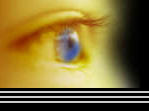Fossil Of Sphinx Found
In China?
By James Donahue
There are so many hoaxes
floating about on the web that we have been reluctant to write about a report in the Chinese media about a fossil of a creature
that resembles the legendary Egyptian Sphinx.
Yet this strange story,
issued by the Chinese news service Xinhuanet, comes complete with a photograph of the fossil. Unlike the famous stone monument
that displays a human face on the body of a lion, this creature seems to lack any humanoid features in the head and it doesn’t
exactly resemble a cat on his lower haunches. Consequently, it appears that the authors of this story have stretched the facts
when they referred to this creature as a “sphinx.”
The story said the fossil
is a counterpart version of the sphinx, however. It was found by Chinese and American paleontologists in China’s Liaoning province.
The report of the find
claims there are two distinct kinds of bone characteristics found in the fossil. The creature’s upper part appears viviparous,
while its lower part appears oviparous. These words involve the reproductive system. Human females are viviparous because
children develop within the mother and get their nourishment from the mother until the time of birth. Animals that lay eggs
are oviparous.
What is exciting about
the two different fossilized remains is that paleontologists believe the discovery may change the traditional theories about
the evolution of mammals.
The paper notes that
mammals are classified into two groups, the viviparous therian, which have fully evolved bones such as kangaroos and elephants,
and the oviparous monotreme, which have comparatively primitive bones. This fossil possessed the characteristics of both times
of bones.
The report says the mammal
measured 12 centimeters in length, weighed about 15 to 20 grams, and lived about 120 million years ago. It had the teeth of
therians and the lumbar ribs found only in primitive mammals.
The writer of the story
apparently asked the same question that we are asking. The story concluded:
“So what is the
explanation for this peculiar phenomenon of “lion body and human head?” One of the co-authors of the report, Li
Gang, reasoned that "the mammal finished synchronized evolution for both its upper part and lower part a long time ago. However,
for some special survival need it had to let its evolved lower part ‘retrogress’ into a more primitive state,”
he said.
Somehow that seems to
be stretching newly found data in an attempt to explain a mythological image that has haunted mankind for thousands of years.

